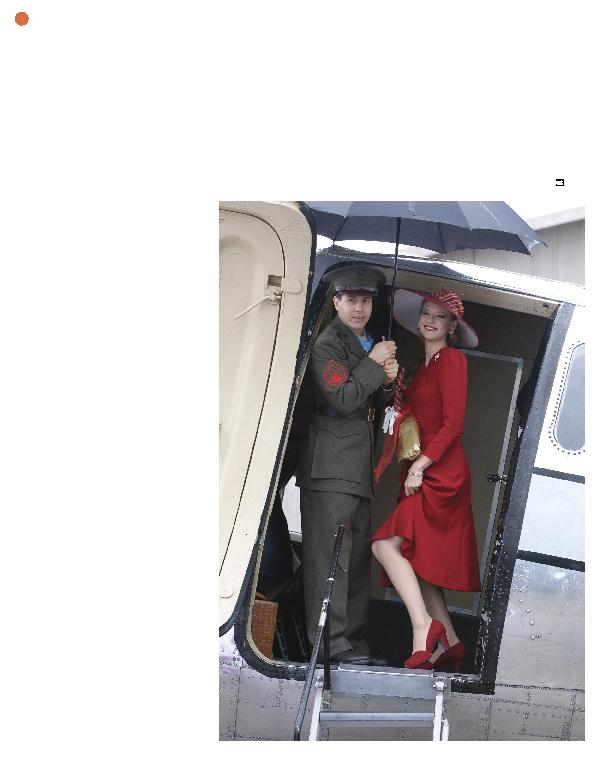
the same thing), before relenting to Shelton's
pleas that he doesn't want to cross that road.
The scene literally transports the viewer
across the battlefield and into the dilemma
in Sledge's mind. "The viewer is going to be
exhausted and concerned about the soul of
Eugene Sledge by the end of that sequence,"
McKenna says. "And that was the intent.
That sequence is one of the most important
in the entire 10 episodes."
pand its emotional depth. Under the origi-
nal outline, part three would have focused
on Leckie's leave to Melbourne and then his
return to battle in Cape Gloucester. With
those other storylines out of the way, it be-
came solely about Leckie's Melbourne expe-
riences, with part four now adding a crucial
element to Leckie's, and The Pacific's, story.
Leckie's trip to a naval hospital on Banika.
He was there being treated for a case of
enuresis (a condition involving uncontrol-
lable urination), but a surprisingly large wing
of the hospital was also dedicated to a psy-
chiatric ward. The episode's brilliance lies in
its portrayal of Leckie, one of the series' he-
roes, struggling mentally and giving in to the
effects of the war. In Helmet for My Pillow,
Leckie doesn't mention his Banika visit in
great detail, but McKenna relayed to Yost
that when he interviewed Leckie's family, he
got the sense that Leckie might have had a
breakdown that led to his stay there.
tray on screen. "Sledge wrote that a marine's
greatest fear was not dying; it was losing his
mind and becoming a burden to his fellow
soldiers," Yost says. "We really wanted to ex-
plore that with Leckie." Yost crafted a con-
clusion to that episode which involved
Leckie seeing a soldier he previously knew
in the hospital. "We wanted to give the
viewer the feeling of Leckie breaking down,"
Yost says. "But then he ends up seeing this
fellow soldier who has really gone off the
deep end. That wakes Leckie up because
that's the fear." This character was created to
not only represent the fear, but to also bring
Leckie back to reality so that he was able to
return to war. "We wanted to give Leckie a
slap in the face for how bad it really could
be," Yost says. "That's what the soldiers were
really terrified of and we needed a way to
personify that."
duction of the miniseries took place during a
time when America remains at war in the
Middle East. McKenna states that the current
war did not impact why they chose to tell
these stories, but it did impact the writing.
"What it did was give us a responsibility not
to comment on the Iraq war, but to get this
war as right as possible," he says. "We tried to
illuminate the truth of war, not just the Pa-
cific war." The connection is not easily
similarity of the enemies: Both the Japanese
in the Pacific and the suicide bombers of
today are willing to senselessly end their lives
in order to destroy the lives of others.
McKenna used this element to show just
how grim the consequences of such an ide-
ology can come to life on the battlefield. "I
wanted the audience to understand that
even in a `good war,' even in a necessary war,
this is what's going to happen to the com-
batants," he says. "There's no way you can
look at this and say, `War is good.'"